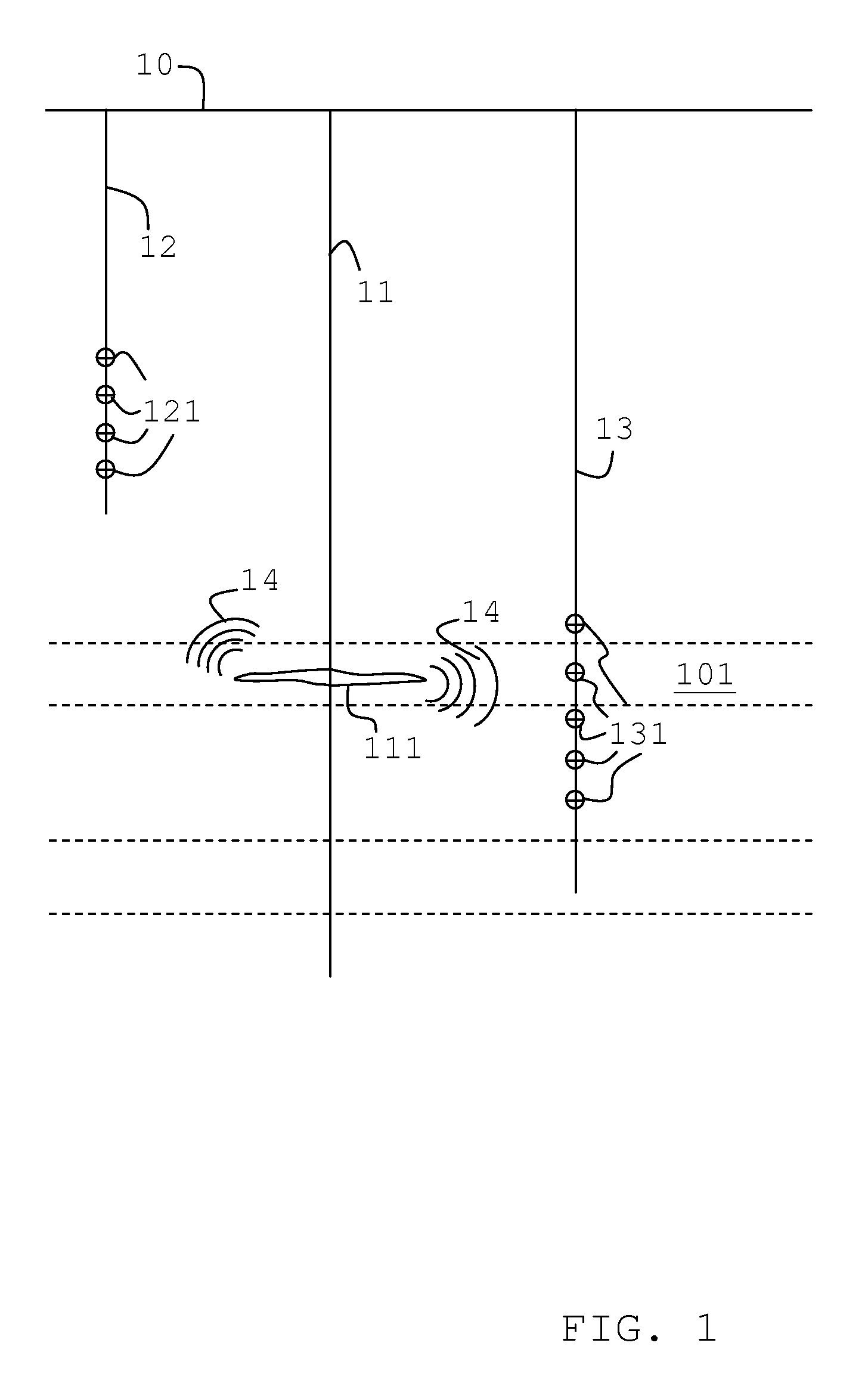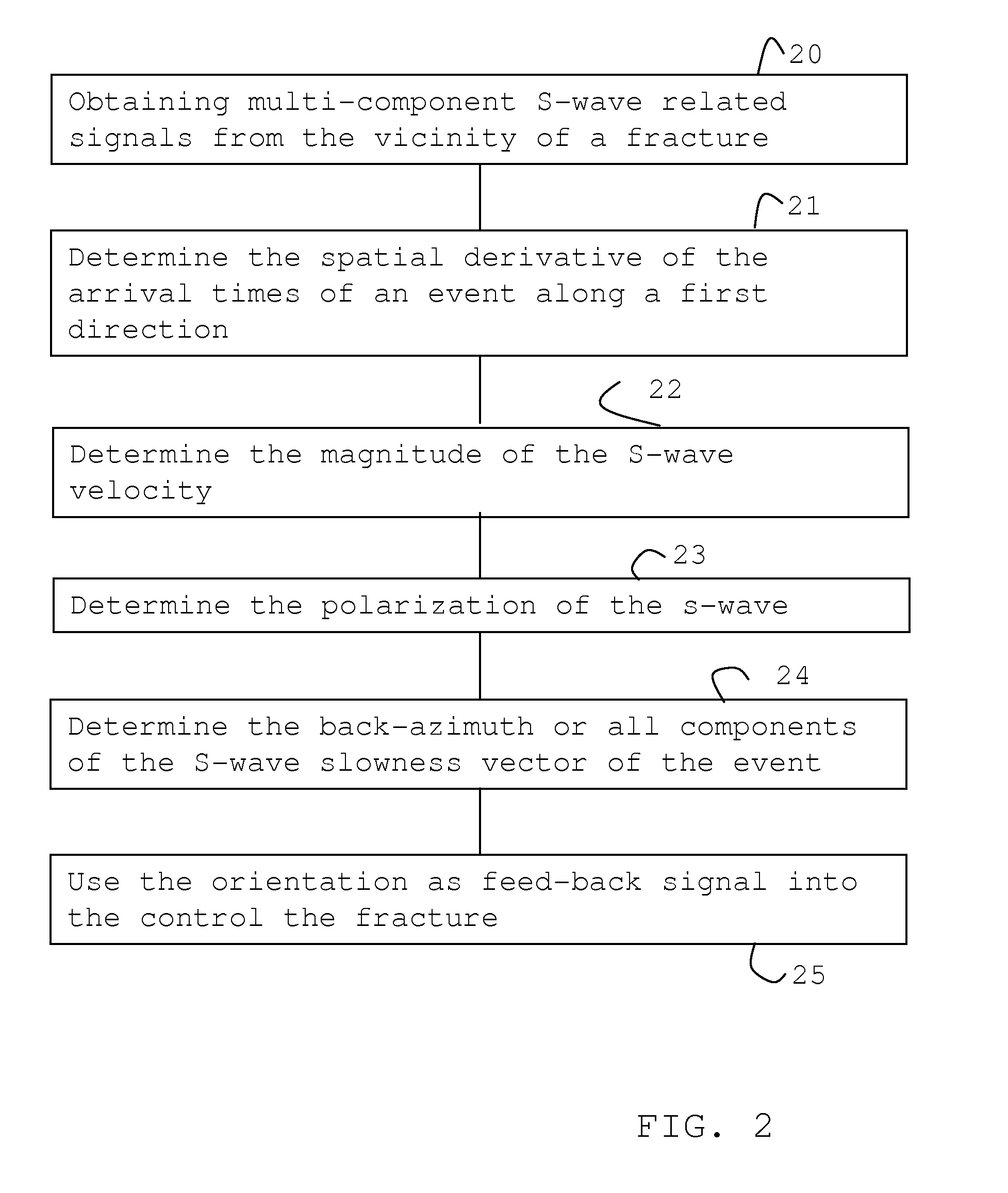Method of monitoring microseismic events
- Summary
- Abstract
- Description
- Claims
- Application Information
AI Technical Summary
Benefits of technology
Problems solved by technology
Method used
Image
Examples
Embodiment Construction
[0033]A typical operational setting for monitoring hydraulic fracturing is illustrated in FIG. 1 with a treatment well 11 and geophone arrays 121, 131 located in neighboring wells or holes 12, 13. During the fracturing operation a fluid is pumped from the surface 10 into the treatment well 11 causing the surrounding formation in a hydrocarbon bearing layer 101 to fracture. S-waves 14 generated by the fracture 111 propagate through the earth and are recorded by the three-components geophones of the two arrays 121, 131 in the monitoring wells 12, 13.
[0034]For the present invention it is assumed that three components of the time history of particle velocity (or particle displacement or acceleration) at several downhole or surface receivers are recorded for an acoustic emission and include at least the S-wave arrivals at all of those receivers.
[0035]The slowness vector {right arrow over (p)} of the detected S-wave is determined from the S-wave arrival-times TS(z), where z is a coordinat...
PUM
 Login to View More
Login to View More Abstract
Description
Claims
Application Information
 Login to View More
Login to View More - R&D
- Intellectual Property
- Life Sciences
- Materials
- Tech Scout
- Unparalleled Data Quality
- Higher Quality Content
- 60% Fewer Hallucinations
Browse by: Latest US Patents, China's latest patents, Technical Efficacy Thesaurus, Application Domain, Technology Topic, Popular Technical Reports.
© 2025 PatSnap. All rights reserved.Legal|Privacy policy|Modern Slavery Act Transparency Statement|Sitemap|About US| Contact US: help@patsnap.com



